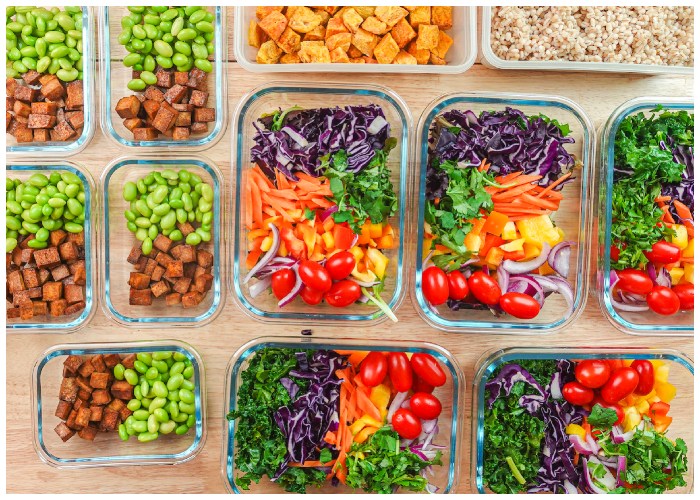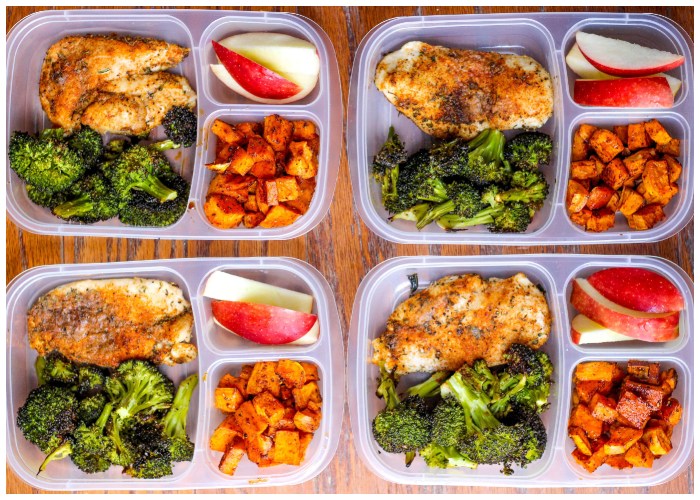Meal prepping is a game-changer for anyone looking to save time, eat healthier, and reduce the stress of daily cooking. By preparing meals in advance, you not only streamline your week but also ensure that you’re fueling your body with wholesome, balanced meals. With just a little planning and a few hours of work, you can create a week’s worth of healthy, delicious meals that will keep you nourished and satisfied. Here’s a step-by-step guide on how to create your own healthy, meal-prep recipes that will take you through the week.
1. Plan Your Menu
Before you start meal prepping, it’s essential to plan your menu for the week. Having a clear idea of what you’ll be eating ensures that you stay organized and prevents any last-minute scrambling. Here’s how to do it:
- Choose Balanced Meals: Aim to include a variety of proteins, vegetables, and whole grains. Incorporate lean proteins like chicken, turkey, tofu, and fish, and ensure you’re getting a mix of colorful vegetables for maximum nutrients.
- Pick Recipes That Keep Well: Choose dishes that hold up well over a few days. Stews, soups, roasted veggies, and grains like quinoa or brown rice store well and actually taste better after marinating for a day.
- Avoid Overcomplicating Things: Keep your meals simple. You can use basic ingredients and season them in different ways to keep things exciting.
Example Meal Plan for the Week:
- Breakfast: Overnight oats with chia seeds, almond butter, and berries
- Lunch: Grilled chicken and vegetable quinoa bowls
- Dinner: Baked salmon with roasted sweet potatoes and steamed broccoli
- Snacks: Hummus with carrot sticks, hard-boiled eggs, and mixed nuts

2. Make a Grocery List
Once your menu is planned, make a detailed grocery list of the ingredients you’ll need for the week. This helps prevent impulse buys and ensures you have everything on hand when it’s time to prep. Break your list into categories like produce, dairy, pantry staples, and protein sources to make your shopping trip more efficient.
3. Batch Cook Proteins and Grains
The key to successful meal prepping is efficiency. Start by cooking your protein and grains in large batches to use in various meals throughout the week. Here are some quick tips:
- Grains: Cook a big batch of quinoa, brown rice, or couscous to serve as a base for salads, bowls, or as a side dish. These grains store well in the fridge and can be easily reheated.
- Proteins: Grill or bake chicken breasts, cook turkey meatballs, or prepare tofu and tempeh. You can also make large batches of chili or stew. Store them in airtight containers for easy access.
- Tip: If you have a slow cooker or Instant Pot, use it to cook large quantities of protein like shredded chicken, beef, or even pulled pork with minimal effort.
4. Prepare Vegetables and Snacks
Next, prepare your vegetables. Pre-chop or roast them so they’re ready to be tossed into any meal throughout the week. Here’s how:
- Roast Vegetables: Roasting vegetables like sweet potatoes, carrots, zucchini, and bell peppers is a great way to bring out their natural sweetness and make them more flavorful. Simply drizzle with olive oil, season with herbs, and roast at 400°F for 20-30 minutes.
- Raw Veggies: For salads or snacking, wash and chop leafy greens (spinach, kale, romaine) and other veggies like cucumbers, tomatoes, and bell peppers. Store them in airtight containers with a paper towel to absorb excess moisture and keep them crisp.
- Snacks: Prepare healthy snacks like mixed nuts, hard-boiled eggs, or individual servings of hummus with carrot sticks and cucumber slices. Portioning snacks into containers ensures that you have easy grab-and-go options throughout the week.
5. Assemble Your Meals
Now that everything is prepped, it’s time to assemble your meals. This is where you can get creative and make sure each meal is balanced and nutritious.
- Use Containers: Invest in good-quality, airtight containers for meal storage. Choose containers that are microwave-safe and have compartments for different ingredients. Glass containers are a great option as they are durable and keep food fresher for longer.
- Layer Your Meals: If you’re making bowls or salads, start by adding grains at the bottom, then layer your protein and vegetables on top. Add any dressings or sauces in a small container to prevent sogginess, and keep them separate until you’re ready to eat.
- Batch Recipes: If you’ve made a soup or stew, divide it into individual portions and store them in containers for easy access. Same goes for casseroles or stir-fries—portion out the servings and store them for quick reheating.
6. Label and Store
Once your meals are assembled, label each container with the date it was prepared and the meal it contains. This helps you keep track of freshness and prevents you from eating the same meal too many times in a row. Store your meals in the fridge if you plan to eat them within 3-4 days, or freeze extras to keep them for longer.
- Storage Tip: For ingredients like cooked grains or proteins, store them in separate containers so you can mix and match them throughout the week to avoid monotony.

7. Reheat and Enjoy
When it’s time to eat, simply grab a pre-portioned meal and reheat it. If you’ve stored fresh salads or ingredients separately, you can quickly assemble them with a drizzle of olive oil, dressing, or your favorite sauce.
Sample Healthy Meal-Prep Recipes
Here are some delicious, balanced recipes to try during your weekly meal prep:
- Grilled Chicken and Veggie Quinoa Bowls
- Cooked quinoa, grilled chicken, roasted vegetables (e.g., sweet potatoes, broccoli, bell peppers), and a simple lemon-tahini dressing.
- Baked Salmon with Roasted Sweet Potatoes and Steamed Broccoli
- Baked salmon seasoned with herbs, roasted sweet potatoes, and steamed broccoli with a squeeze of lemon.
- Vegetable Stir-Fry with Tofu
- Stir-fry mixed vegetables (carrots, snap peas, bell peppers) with sautéed tofu, ginger, garlic, and a soy-based sauce. Serve over brown rice or noodles.
- Chickpea Salad
- A salad made with chickpeas, cucumber, tomato, red onion, feta cheese, and a lemon-oregano dressing.
- Turkey Meatballs with Zucchini Noodles
- Baked turkey meatballs paired with zucchini noodles (or spaghetti squash), topped with marinara sauce and Parmesan cheese.